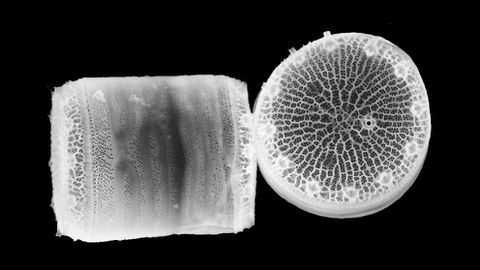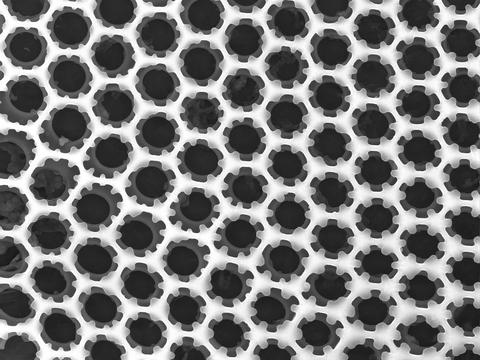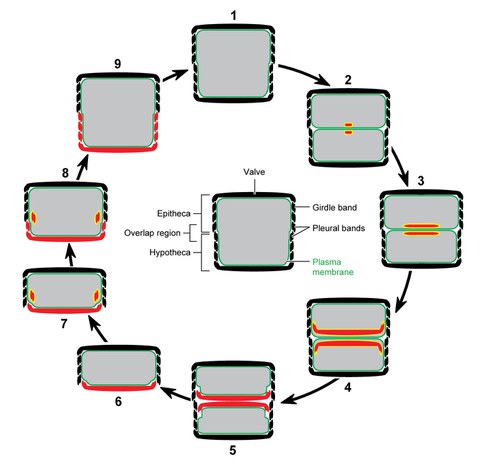Biomineralization

Thalassiosira pseudonana
The formation of inorganic materials with complex form is a widespread biological phenomenon (biomineralization) that occurs in almost all groups of organisms from prokaryotes (e.g., magnetite nanocrystals in certain bacteria) to humans (bone and teeth). Among the most spectacular examples of biomineralization are the intricately structured cell walls of diatoms, a large group of single-celled eukaryotic algae that are present in almost all water habitats. Diatom cell walls are made of amorphous, hydrated SiO2 (silica) and exhibit highly regular porous patterns
The complex biomineral structures of diatoms illustrate our limited understanding of a very fundamental biological question: How does a cell translate DNA sequence information into a patterned three-dimensional structure? There are tens of thousands diatom species, each forming a different aesthetically sculptured silica cell wall with characteristic nano- and micropatterns.
Diatoms have thus mastered the combination of two contradictory capabilities: the biosynthesis of complex structures with high fidelity, and the seemingly infinite variation of this process. Therefore, important lessons can be learned from diatoms regarding the mechanism by which eukaryotic cells assemble the cellular machinery to execute a morphogenetic program.
Diatom silica is produced from Si(OH)4 (orthosilicic acid), which is taken up into the cell by specific transporter proteins (SITs). By a yet unidentified pathway, the silicic acid is concentrated and stored inside the cell until it polymerized into silica inside specific intracellular compartments, the silica deposition vesicles (SDVs).
The aim of the Kröger group is to understand the mechanism of silica formation in diatoms to discover fundamental principles of biomineral morphogenesis. We approach this task using experimental tools from biochemistry, molecular genetics, and molecular cell biology. The work involves identification of the morphogenetic biomolecules, investigation of their properties in vitro, and studies on their influence on silica biogenesis in vivo. Previously work by the Kröger group and others have led to the identification of highly unusual proteins (silaffins, cingulins, silacidins) and long-chain polyamines (LCPA) that are intimately associated with diatom biosilica, and are believed to be directly involved in its morphogenesis.
Current activities in the Kröger group are directed towards (i) understanding the interplay between the known silica forming components, (ii) determining the role of each component in silica morphogenesis in vivo, and (iii) identifying the complete set of biomolecules involved in diatom silica formation.
Insight into the mechanisms of biomineralization in diatoms is not only interesting from a biological point of view. Over the past decade the discovery of fundamental principles of this process has spurred biomimetic and bioenabled methods for the production of nanopatterned functional ceramics under mild reaction conditions.


